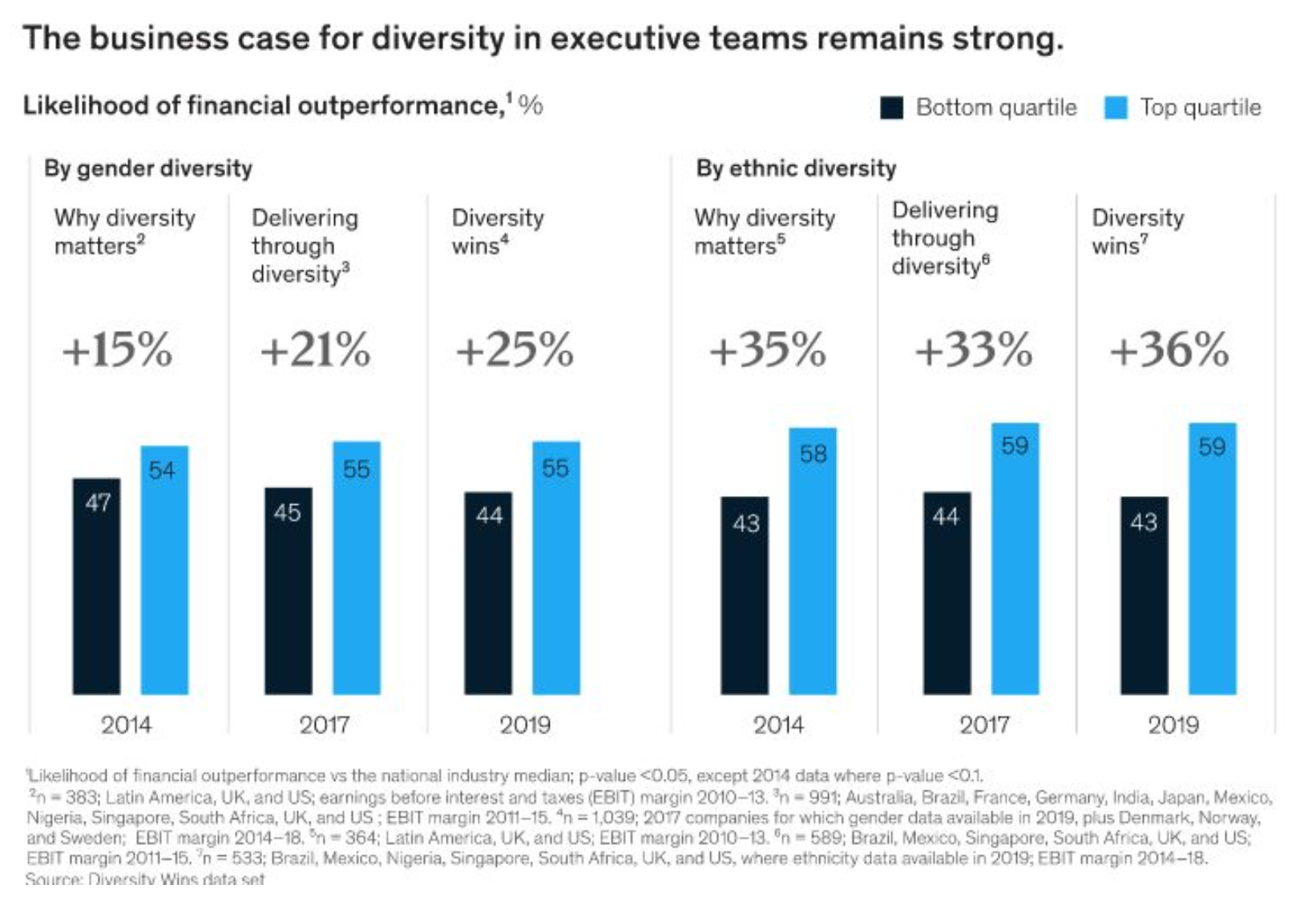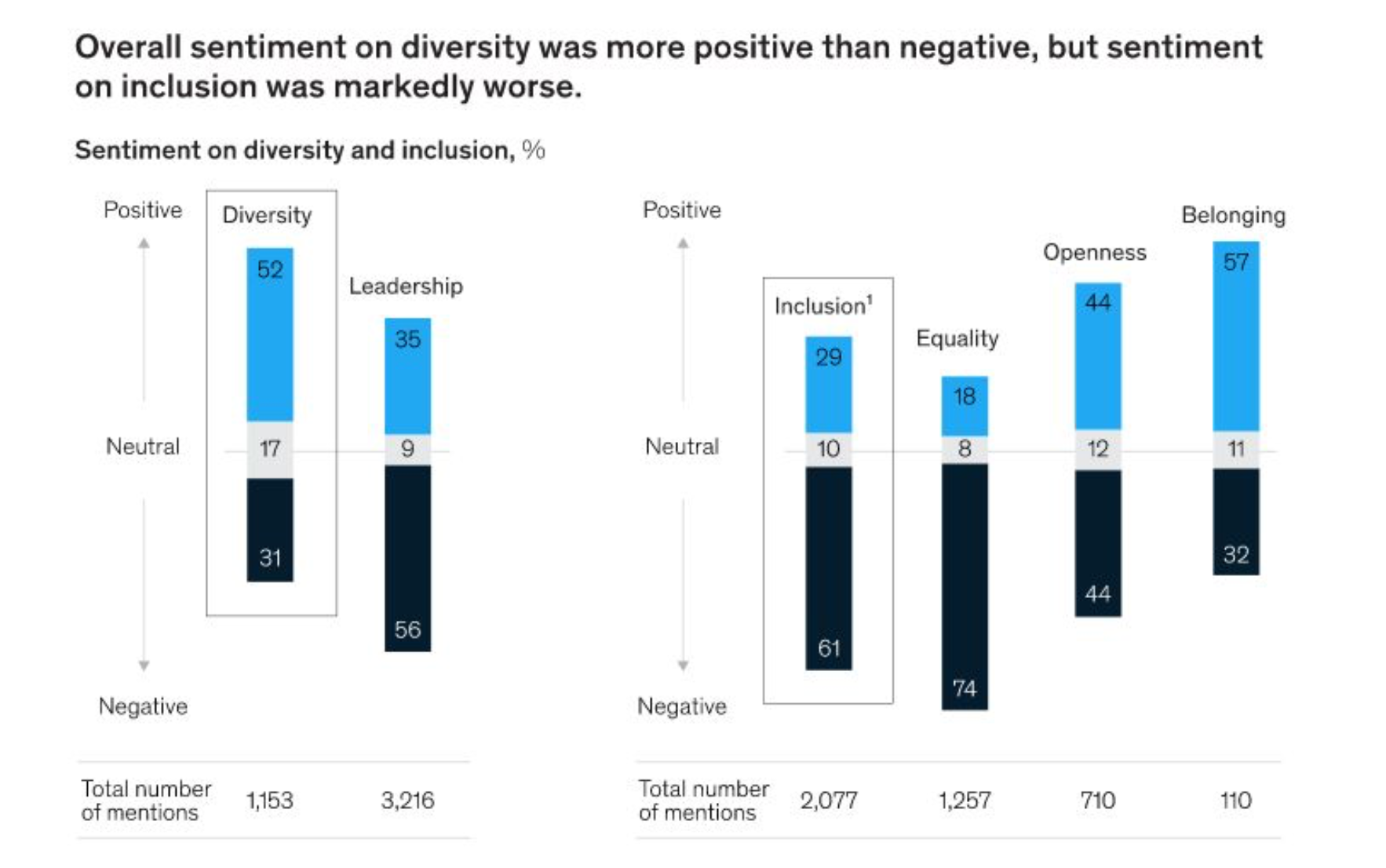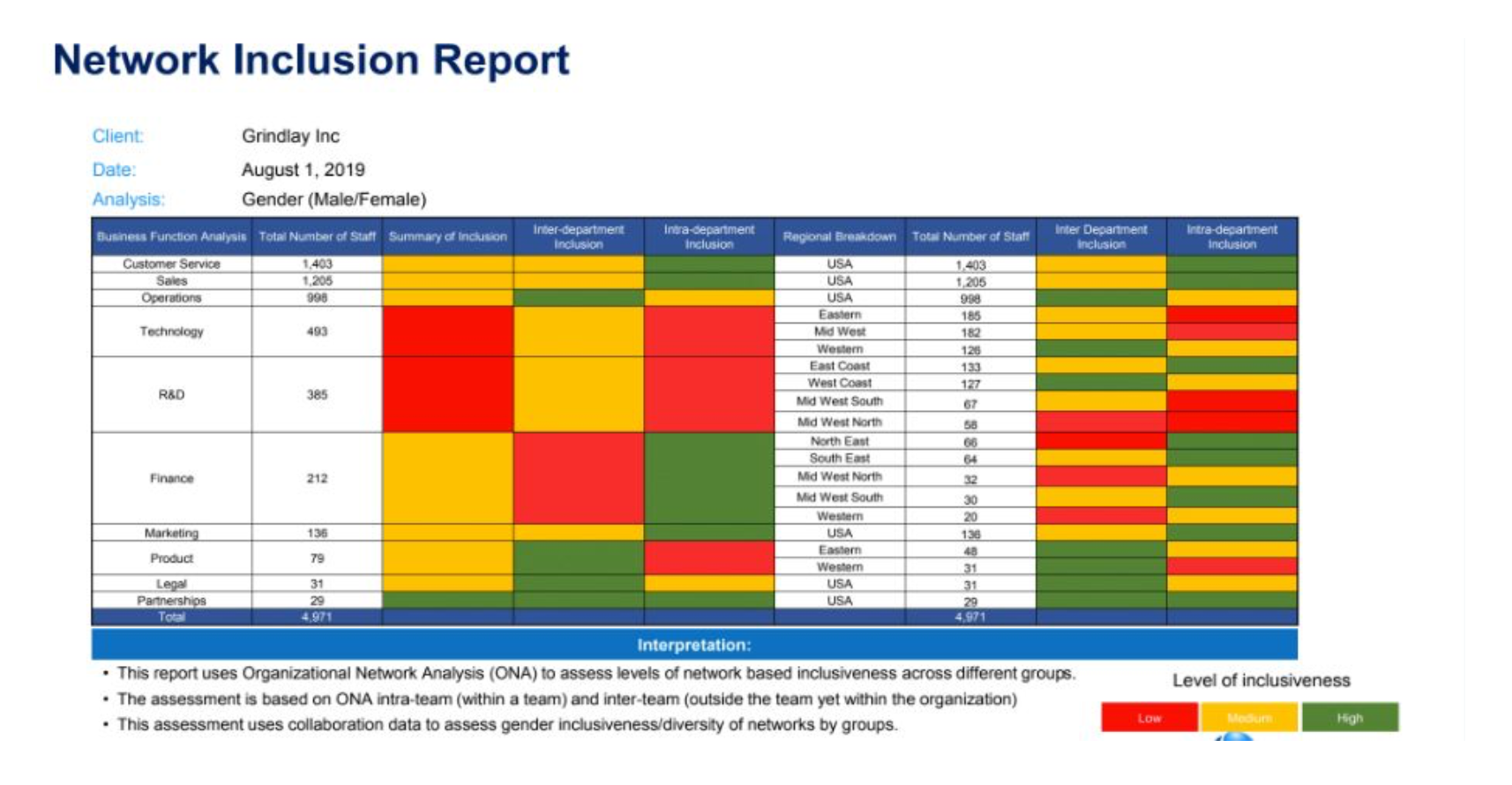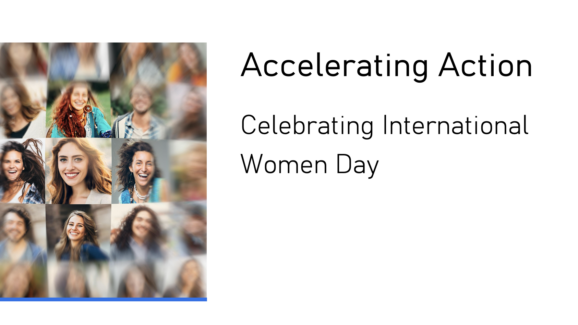Diversity up, Inclusion down – Business Impact & Solution

Let’s start with an existential question – why do we even exist as human beings?
An ultimate accomplishment is to have complete and unhindered self-expression. For most of humanity, this happens best in the context of love, respect and belonging since it makes us feel safe and courageous. We also know that the opposite of courage is not fear, it is conformity. And conformity suppresses creativity and self expression.
Honest D&I is an organization’s way of saying “I love you and I respect you” and leaders have the highest leverage and impact of anyone. For some time this has been a space where the answer to the question of being a company that believes in and practices D&I was “we think so”. It does not have to be that way anymore. People Analytics and in particular ONA (organization network analysis) is a tool companies can use effectively, at a relatively low cost in relation to ROI, to visualize, measure and constantly make increments. We will get to this a little later.
Diversity Doesn’t Stick Without Inclusion
As per HBR, “Diversity” and “Inclusion” are so often lumped together that they’re assumed to be the same thing. But that’s just not the case. I”‹n the context of the workplace, diversity equals representation. Without inclusion, however, the crucial connections that attract diverse talent, encourage their participation, foster innovation, and lead to business growth won’t happen. Numerous studies”‹ show that diversity alone doesn’t drive inclusion. In fact, without inclusion there’s often a diversity backlash.
As noted diversity advocate ”‹VernÄ Myers”‹ puts it, “”‹ Diversity is being invited to the party. Inclusion is being asked to dance.”
McKinsey has been researching this domain for numerous years. The findings below emerge from their largest data set so far, encompassing 15 countries and more than 1,000 large companies. They have incorporated a “social listening” analysis of employee sentiment in online reviews and their findings highlight that companies should pay much greater attention to inclusion, even when they are relatively diverse.
Diversity – Key Takeaways:
- Likelihood of outperformance continues to be higher for diversity in ethnicity than for gender – a substantial differential likelihood of outperformance””48 percent””separates the most from the least gender-diverse companies.
- The greater the representation of women, the higher the likelihood of outperformance; Companies with more than 30 percent women executives were more likely to outperform companies where this percentage ranged from 10 to 30,
- companies in the top quartile for gender diversity on executive teams were 25 percent more likely to have above-average profitability
- despite the awareness, there is a widening gap between D&I leaders and companies that have yet to embrace diversity; the representation of ethnic-minorities on UK and US executive teams stood at only 13 percent in 2019, up from just 7 percent in 2014
- In 2019, fourth-quartile companies for gender diversity on executive teams were 19 percent more likely than companies in the other three quartiles to underperform on profitability””up from 15 percent in 2017 and 9 percent in 2015.

Diversity without inclusion is a story of missed opportunities. Here are some key takeaways from McKinsey’s outside-in research using “social listening,” focusing on sentiment in employee reviews of their employers posted on US-based online platforms. While this approach is indicative, rather than conclusive, it could provide a more candid read on inclusion than internal employee-satisfaction surveys do
Inclusion – Key Takeaways:
- While overall sentiment on diversity was 52 percent positive and 31 percent negative, sentiment on inclusion was markedly worse, at only 29 percent positive and 61 percent negative.
- For the three indicators of inclusion””equality, openness, and belonging”” their research found particularly high levels of negative sentiment about equality and fairness of opportunity.
- Negative sentiment about equality ranged from 63 to 80 percent across the industries analyzed. Negative sentiment about openness ranged from 38 to 56 percent
- Belonging elicited overall positive sentiment, but from a relatively small number of mentions.

HBR research finds that employees with inclusive managers are 1.3 times more likely to feel that their innovative potential is unlocked. And therefore employees who are able to bring their whole selves to work (i.e. who feel included) are 42% less likely to say they intend to leave their job within a year.
Societal Context
Let’s zoom out for a second into a wider societal context. Over 9 million people in the UK ”“ almost a fifth of the population ”“ say they are always or often lonely. The Brits may not be the only ones feeling this way. The overuse of technology is a cause of depression, social anxiety and a lack of meaningful connections. And if we add to this lack of feeling included at work, what kind of a society will we end up creating? This impacts everyone – our own partners, kids, parents. With only a handful of aware individuals (leadership), a world of good can be created in society.
Not only it D&I is right from a humane perspective, but data not only suggests that it makes a good deal of business sense; organizations with the D&I”‹ esprit de corps’”‹ position themselves for business success by attracting the right kind of talent and making them feel like they are in the right place. This spurs safety, feeling cared for and as a result the release of the creative genie out of the bottle for out of the box thinking, non-conformist thinking and exemplary performance. The stats are above to make the business case.
Using Organization Network Analysis for insights into D&I to track and report progress
For some time this has been a space where the answer to the question of being a company that believes in and practices D&I was “we think so”. With Organization Network Analysis (ONA), it does not have to be that way anymore! ONA can be used not only to measure diversity but also to measure network activity and analyze the immersion of different employees across the organization
With ONA, you can map and analyze patterns of interaction across relationship networks of every employee, so Diversity & Inclusion leaders can understand where differences exist in specific groups of employee’s networks in different hierarchies.

Even relatively diverse companies face significant challenges in creating work environments characterized by inclusive leadership and accountability among managers, equality and fairness of opportunity, and openness and freedom from bias and discrimination. However with the right tools, technology and data, you can measure the impact of your various D&I initiatives and make required improvements on an objective basis.
Puneet Sachdev is International Director, Human Capital at The Singularity Lab. The Singularity Lab is an integrated human capital consultancy, helping technology companies achieve exponential results by attracting and retaining top talent and creating high performing inclusive cultures based on data, design and technology. Learn more about our”‹ ”‹ONA solution”‹ for D&I.



